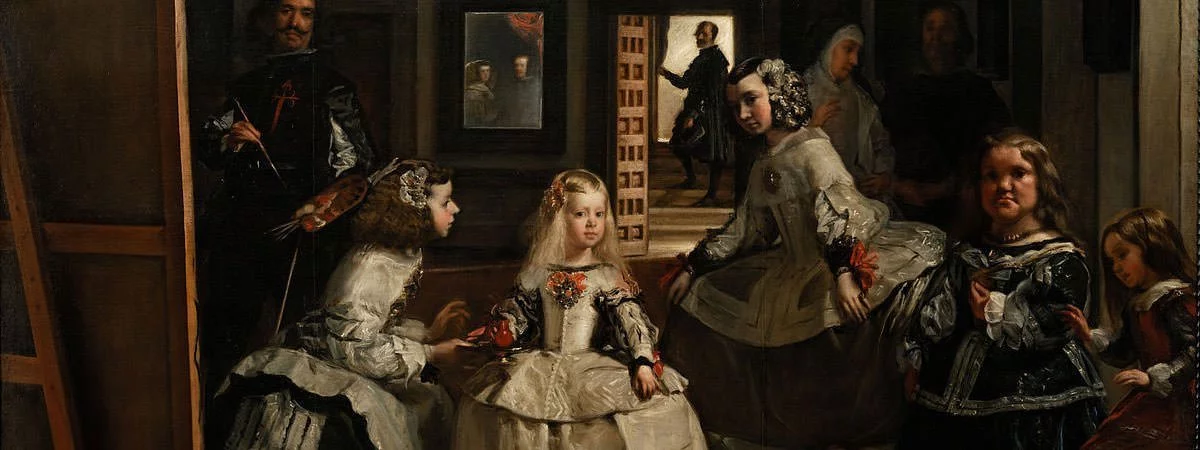Spain has contributed immensely to European art and some of the most renowned masterpieces of western art have been created by Spanish artists. Spanish Golden Age was a period from the early 16th century to the late 17th century which saw the nation flourishing in arts and literature; and, among other things, becoming an important contributor to the European art world. Early famous Spanish paintings were mostly religious and these include depictions of The Immaculate Conception by Murillo. Francisco Goya, considered as both the last of the Old Masters and the first of the moderns, created revolutionary works like The Nude Maja and The Third of May 1808; which are perhaps the most renowned nude and war paintings by a Spanish artist before the 20th century. Spain played a leading role in modern art and contributed with some of the best known masterpieces of the modern era, including Dali’s Persistence of Memory, Picasso’s Guernica and Miro’s The Farm. Know more about the great works created by Spanish artists through their 10 most famous paintings.
#10 The Farm
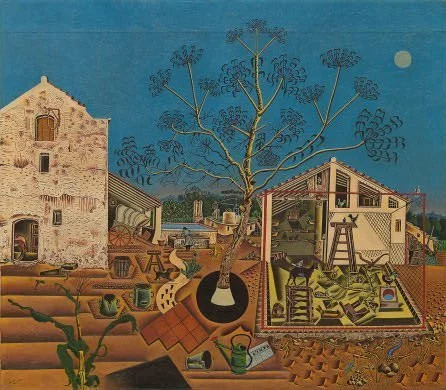
| Spanish Title: | La Granja |
| Location: | National Gallery of Art, Washington, D.C. |
| Artist: | Joan Miro |
| Year: | 1922 |
Joan Miro is regarded as a towering figure in modern art. His most famous painting, The Farm, shows the family’s country house in Mont-roig del Camp, Catalonia. Miro later said of the artwork, “I wanted to put everything I loved about the country in the canvas, from a huge tree to a tiny little snail.” Miro regarded The Farm as key to his artistic career describing it as “the summary of one period of my work, but also the point of departure for what was to follow.” The painting is regarded as the highest point of Miro’s realistic representations, before he turned towards surrealism. Ernest Hemingway bought it later and compared its artistic accomplishment to James Joyce’s Ulysses. He wrote in 1934, “I won’t change The Farm for any painting in the world”.
#9 The Immaculate Conception of Los Venerables
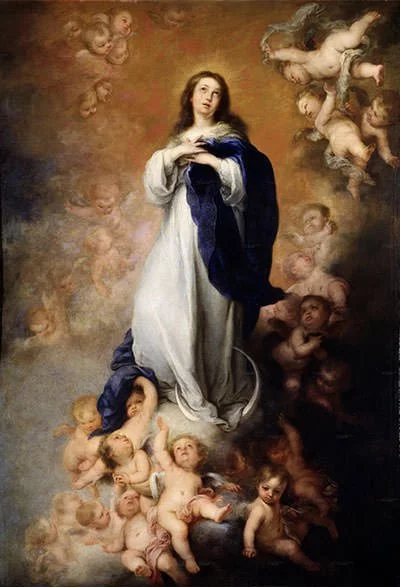
| Spanish Title: | La Inmaculada Concepción de los Venerables |
| Location: | Museo del Prado, Madrid, Spain |
| Artist: | Bartolomé Esteban Murillo |
| Year: | 1678 |
The Immaculate Conception is a Catholic belief that Virgin Mary was conceived free from original sin. The Immaculate Conception was a popular subject in Spanish art and Murillo, the most famous Spanish painter at the time, created a highly successful formula for representing the theme. He presented Mary, dressed in blue and white, in a celestial space filled with light, clouds and angels. Over the course of his career, he created more than two dozen paintings on the subject. This is perhaps the last one of them and the best known. Probably the most famous depiction of the Immaculate Conception, the painting is also known as Inmaculada de Soult as it was brought to France in 1813 during the War of the Spanish Independence by French commander Jean de Dieu Soult.
#8 The Nude Maja
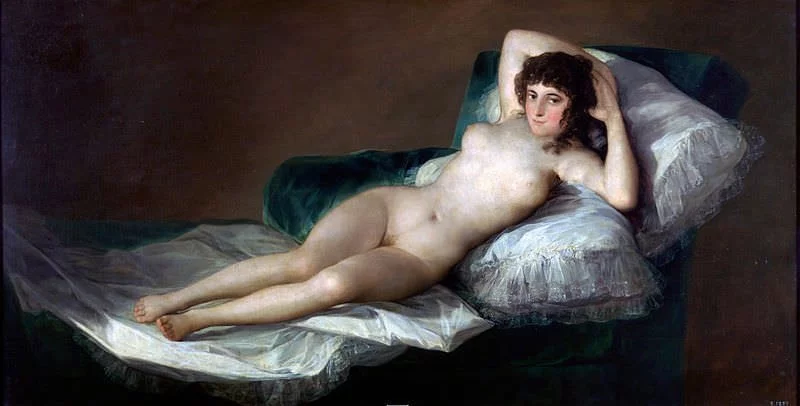
| Spanish Title: | La Maja Desnuda |
| Location: | Museo del Prado, Madrid, Spain |
| Artist: | Francisco Goya |
| Year: | 1800 |
Francisco Goya is regarded as the most important Spanish artist of late 18th and early 19th centuries; and one of the great portraitists of modern times. The Nude Maja, one of his masterpieces, is known as the first “totally profane life-size female nude in Western art” and the first large Western painting to depict female pubic hair without obvious negative connotations. The painting was most likely commissioned by Prime Minister of Spain Manuel de Godoy. The identity of the model is not known with certainty. Likely candidates are Godoy’s mistress Pepita Tudo and María Cayetana de Silva, 13th Duchess of Alba. Known for the straightforward and unashamed view of the model towards the viewer, it is considered a revolutionary work which expanded the horizons of Western art.
#7 Swans Reflecting Elephants
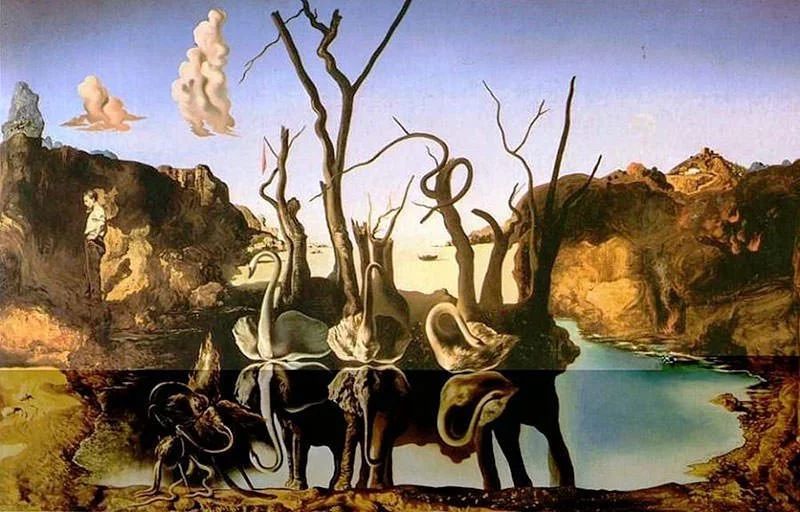
| Spanish Title: | Cisnes que se reflejan como elefantes |
| Location: | Private Collection |
| Artist: | Salvador Dali |
| Year: | 1937 |
Double images were a major part of Dali’s paranoiac-critical method, in which the artist attempts to tap into his subconscious through systematic irrational thought and a self-induced paranoid state. This painting uses the reflection in a lake to create a double image. The three swans in front of the trees are reflected in the lake so that their necks become the elephants’ trunks and the trees become the legs of the elephants. The landscape contrasts with the stillness of the lake as Dali has used swirl-like images to depict the background cliffs and skies. Swans Reflecting Elephants is considered a landmark painting in Surrealism as it enhanced the popularity of the double-image style. It is the most famous double image created by Salvador Dali; his greatest masterpiece using the paranoiac-critical method; and one of the most well-known works by a Spanish artist.
#6 The Burial of the Count of Orgaz

| Spanish Title: | El entierro del conde de Orgaz |
| Location: | Church of Santo Tomé, Toledo, Spain |
| Artist: | El Greco |
| Year: | 1588 |
This painting was commissioned to El Greco in 1586 by the parish priest of Santo Tomé in Toledo, Spain. It illustrates a popular local legend by which Saints Augustine and Stephen descended from the heavens to assist in the burial of Don Gonzalo Ruíz, a native of Toledo known for philanthropy and piety; and who was posthumously known as Count of Orgaz. The lower section of the painting depicts the miraculous burial while the above shows the spiritual world waiting to receive the pious man into heaven. As the artwork is a prime example of Mannerism, depicts a visionary experience and contains an impressive array of portraits, it is seen by art critics as the coming together of all extraordinary attributes of El Greco’s art. It is universally regarded as the greatest masterpiece of one of the most influential figures in Spanish art.
#5 The Third of May 1808
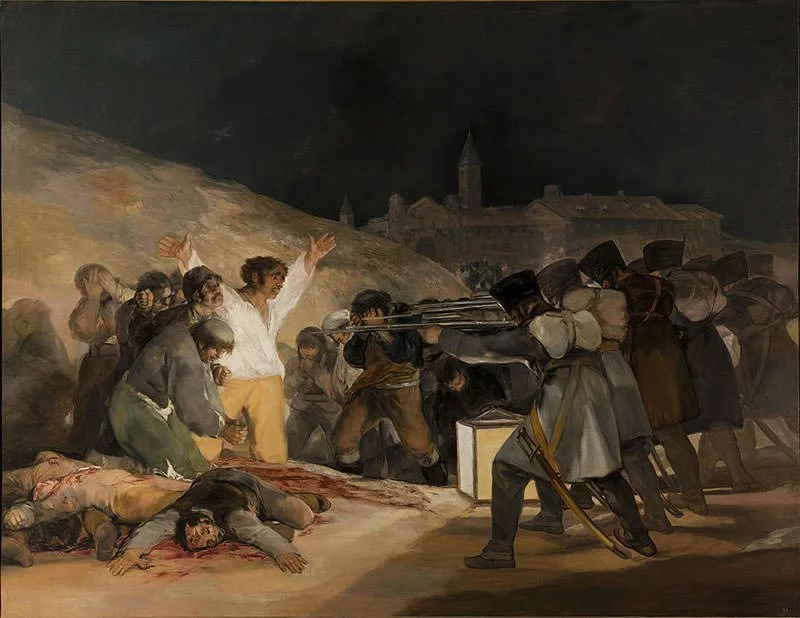
| Spanish Title: | El tres de mayo de 1808 en Madrid |
| Location: | Museo del Prado, Madrid, Spain |
| Artist: | Francisco Goya |
| Year: | 1814 |
On May 2, 1808, the people of Madrid rebelled against the occupation of the city by Napoleon’s French army. Goya has captured this uprising in his painting The Second of May 1808. The Third of May 1808, the most famous painting by the artist, depicts the retaliation by the French the following day, during which hundreds of Spaniards were rounded up and shot. The painting is considered one of the first great paintings of the modern era; has been called revolutionary in its style, subject and intention; and has inspired several famous painting by future artists most prominently Pablo Picasso’s masterpiece Guernica.
#4 Les Demoiselles d’Avignon
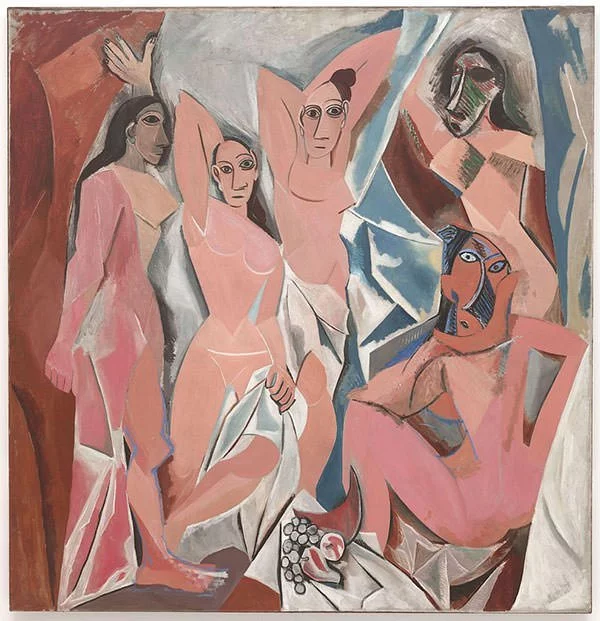
| English Title: | The Young Ladies of Avignon |
| Location: | Museum of Modern Art, New York City |
| Artist: | Pablo Picasso |
| Year: | 1907 |
Originally titled Le Bordel d’Avignon (The Brothel of Avignon), this revolutionary masterpiece is considered one of the most influential paintings of 20th century as it played a key role in the development of both Cubism and Modern art. It was a radical departure from traditional European painting. Picasso used different styles to depict each figure in the painting with the head of the women pulling the curtain in upper right being the most strictly Cubist element. The painting was controversial not only for its radical style but also for its subject. It was first exhibited to the public in 1916 and its title was changed to lessen its scandalous impact. The Avignon of the work’s title is a reference to a street in Barcelona famed for its brothel. The artwork depicts five nude female prostitutes in a disconcerting confrontational manner. Les Demoiselles d’Avignon is considered one of the most important works of Pablo Picasso.
#3 The Persistence of Memory
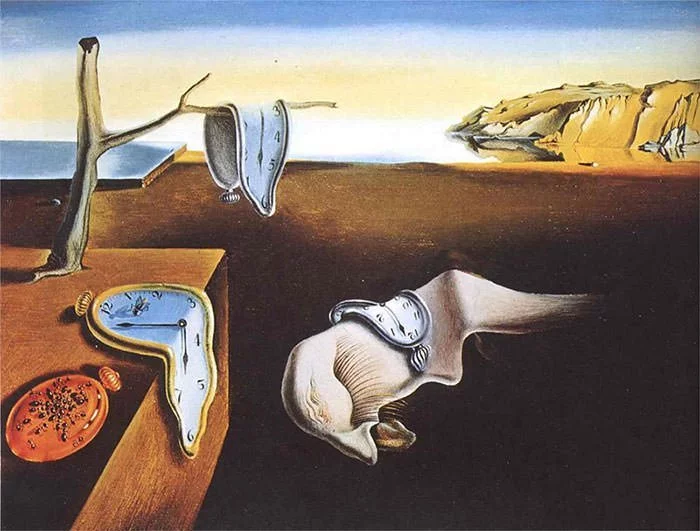
| Spanish Title: | La persistencia de la memoria |
| Location: | Museum of Modern Art, New York City |
| Artist: | Salvador Dali |
| Year: | 1931 |
This iconic and much-reproduced painting depicts a scene with watches melting slowly on rocks and the branch of a tree, with the ocean as a back drop. Dali uses the concept of hard and soft in this painting. This concept may be illustrated in a number of ways like the human mind moving from the softness of sleep to the hardness of reality. In his masterpiece, Dali uses melting watches and rocks to represent the soft and hard aspects of the world respectively. The Persistence of Memory has been much analyzed over the years as Dali never explained his work. The melting watches have been thought to be an unconscious symbol of the relativity of space and time; as a symbol of mortality with the ants surrounding the watches representing decay; and as irrationality of dreams. The Persistence of Memory is considered one of the greatest masterpieces of twentieth century art. It is not only the most famous painting of Salvador Dali but also the most renowned artwork in Surrealism.
#2 Las Meninas
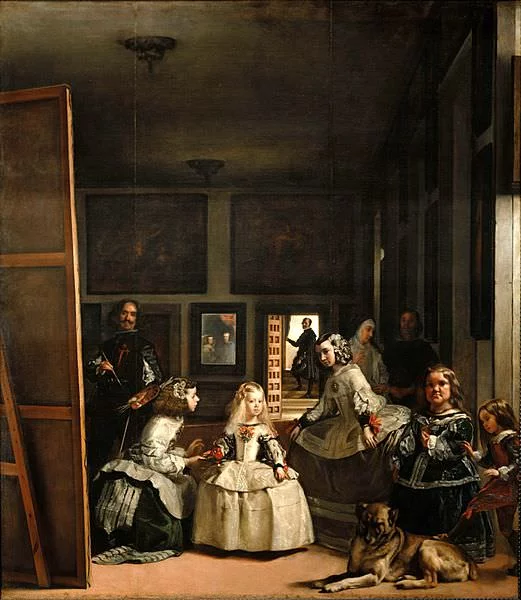
| English Title: | The Maids of Honor |
| Location: | Museo del Prado, Madrid, Spain |
| Artist: | Diego Velazquez |
| Year: | 1656 |
Considered one of the most important paintings ever, Las Meninas depicts at its center the 5 year old Margarita Teresa. The infant Margarita is surrounded by her maids, bodyguard, two dwarfs and a dog. On the left, Velazquez depicts himself with a brush, leading to BBC calling this masterpiece “the world’s first photobomb”. Above the princess’ head is a mirror which shows her father and mother, King Philip IV of Spain and Mariana of Austria. They appear to be in position of the viewer. Velazquez perhaps depicts the scene of him painting the royal couple. Las Meninas has been described to represent the “theology of painting” and “the true philosophy of the art” by notable artists. Diego Velazquez is regarded as one of the most influential painters in European history and Las Meninas is considered his supreme achievement. It is one of the most analyzed paintings in Western art history.
#1 Guernica

| Location: | Museo Reina Sofía, Madrid, Spain |
| Artist: | Pablo Picasso |
| Year: | 1937 |
Guernica is a town in northern Spain. On 26th April 1937, during the Spanish Civil War, Guernica was bombed by Nazi German and Fascist Italian warplanes on request of Spanish Nationalists. Picasso created this masterpiece in response to the bombing of Guernica. It brought worldwide attention to the Spanish Civil War and is considered one of the most powerful antiwar paintings in history. There have been numerous interpretations of Guernica since its creation. On the left of the canvas, a wide-eyed bull stands above a woman grieving over a dead child in her arms. The center is dominated by a horse falling in agony as if struck by a weapon. Under the horse is a dismembered soldier while towards its right is a frightened female figure which appears to have floated into the room through a window. From the right, an awe-struck woman staggers towards the center. The two dominant elements in the painting, the bull and the horse, are important characters in Spanish culture. Guernica is the most famous painting by arguably the greatest painter of all time.

